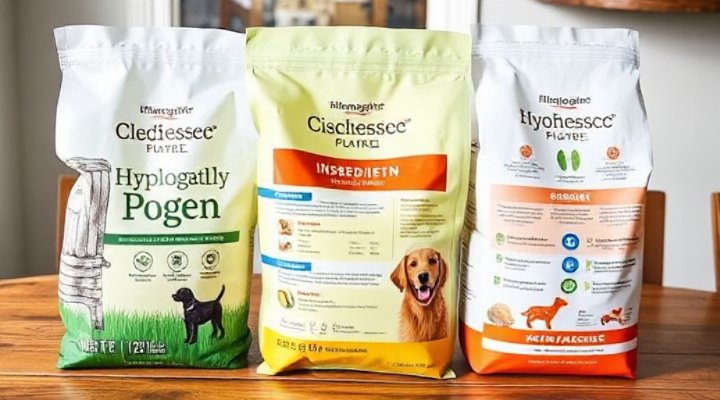If your dog is constantly scratching, licking their paws, or suffering from digestive issues, they might be reacting to their food. Hypoallergenic dog food could be the solution you’ve been searching for. These specially formulated diets use novel protein sources and limited ingredients to minimize allergic reactions, giving your pup the relief they deserve.

Understanding Dog Food Allergies
First things first, let’s clarify what we mean by dog food allergies. Unlike humans who might sneeze or get watery eyes, dogs typically show their allergies through skin irritation or digestive problems. Common culprits include beef, dairy, wheat, and chicken – ingredients found in many conventional dog foods.
According to the American Veterinary Medical Association, food allergies affect about 10% of all allergy cases in dogs. That’s why switching to hypoallergenic dog food can make such a dramatic difference in your pet’s quality of life.

Key Features of Quality Hypoallergenic Dog Food
Novel Protein Sources
One hallmark of good hypoallergenic dog food is the use of novel proteins. These are protein sources your dog hasn’t been exposed to before, such as:
- Duck
- Venison
- Kangaroo
- Salmon
As we discussed in our guide to dog food brands, rotating protein sources can help prevent new allergies from developing.
Limited Ingredient Formulas
Another crucial feature is limited ingredient diets (LID). These formulas contain fewer components, making it easier to identify and eliminate potential allergens. Look for foods with:
- Single protein source
- Limited carbohydrate sources
- No artificial additives

Transitioning to Hypoallergenic Food
Switching your dog’s food requires patience. Here’s a step-by-step approach:
- Consult your veterinarian first
- Start with a 25% new food to 75% old food ratio
- Gradually increase the new food over 7-10 days
- Monitor for improvements in symptoms
Remember, it can take 8-12 weeks to see full results, so don’t give up too soon! For more on dietary transitions, check out our transition guide.
Homemade Hypoallergenic Options
For pet parents who prefer DIY approaches, homemade hypoallergenic dog food can be a great alternative. Our homemade dog food recipes include several hypoallergenic options. Just remember:
- Always consult with a veterinary nutritionist
- Ensure proper nutrient balance
- Introduce new ingredients slowly

Top Hypoallergenic Dog Food Brands
After extensive research and consultation with veterinarians, here are some top-rated hypoallergenic dog food brands:
- Royal Canin Veterinary Diet Hydrolyzed Protein
- Purina Pro Plan Veterinary Diets HA
- Hill’s Prescription Diet z/d
- Natural Balance L.I.D. Limited Ingredient Diets
The FDA’s pet food guidelines recommend looking for brands that meet AAFCO nutritional standards.
Final Thoughts
Finding the right hypoallergenic dog food might require some trial and error, but the payoff – a happy, healthy, itch-free pup – is absolutely worth it. Remember that every dog is unique, so what works for one might not work for another. With patience and persistence, you’ll find the perfect solution for your furry family member.
Related keywords: dog food allergies, best hypoallergenic dog food, limited ingredient dog food, novel protein dog food, dog allergy symptoms, grain free dog food, sensitive stomach dog food
